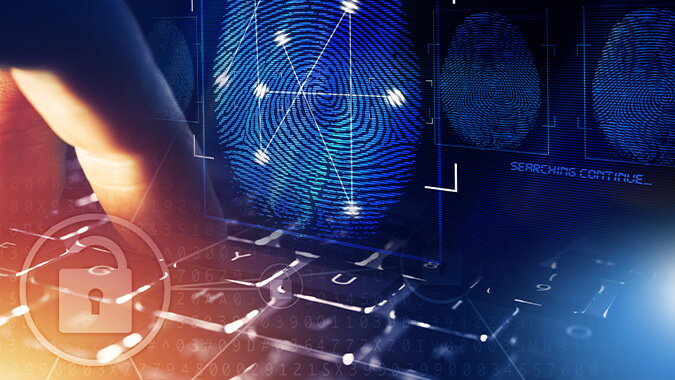
Cybersecurity Threats Facing Executives and Private Businesses
- Published
- Nov 10, 2021
- Share
By Eldri Dogani
Reducing an organization’s or executive’s exposure to cyber threats has become a key objective for many cyber professionals. Many executives are being profiled by cybercriminals as profitable targets, and private businesses are being victims of ransomware attacks which are increasing in an exponential rate, especially in the last decade. The rapid digital transformation and evolving technology is forcing cybersecurity teams to design new ways of mitigating cyber attacks across a changing technology landscape. This month, EisnerAmper Digital hosted a webcast on the topic and possible solutions to mitigate risk of these attacks. Speakers included:
- Rahul Mahna, Managing Director of Managed Security Services, EisnerAmper Digital
- Vikas Bangia, Principal, Deputy Chief Information Security Officer, Bessemer Trust Company
The last decade has offered the world many technological evolutions and developments, which have radically changed the way individuals interact in the social and business environment. The usage of smartphones has dramatically increased over the past decade – currently, 85% of Americans own a smartphone, compared to 35% in 2011. Social media has become an important part of the daily routine for many people. Experts have estimated the installation of approximately 31 billion IoT devices in 2020. Cloud services have increased their presence by 21% in the American population, storing about 50% of consumer data in the cloud that was once stored locally in home devices. All these technological advancements have given rise to two new economies.
- Surveillance capitalism – Monetarization of behavioral data by big tech and data aggregators.
- Hacking – A fraudulent act by cybercriminals to compromise people, companies and networks for monetary gains.
The Hacking Economy
The hacking economy has continuously developed itself during the last decade. Unfortunately, every 11 seconds, a ransomware attack is being executed; about half of the American population has been the victim of at least one cyber attack in 2019. Apple devices, once perceived as invulnerable devices to cyber threats, have had an 80% increase in attacks experienced. Cybercrimes’ cost to the global economy is about $6 trillion; paradoxically, a budget of $10 per month is more than is necessary to weaponize a cybercriminal with the appropriate tools to conduct an effective attack.
What Is Ransomware?
One typical attack used by cybercriminals to compromise physical and digital assets of a company or individual is a ransomware attack. Ransomware is a type of malicious software that infects a system, encrypts (effectively scrambles) its data, and then demands payment to reverse it, most of the time is in a form of cryptocurrency. Some more sophisticated ransomwares exploit vulnerabilities to spread on their own without human interaction (similar to a worm). Many organizations have been victims of ransomware attacks, and it is estimated that a ransomware attack can cause a 23-day downtime to a company, which, consequently, impacts the consumer trust, the company’s morale and its revenue.
How a Basic Ransomware Attack Works
A basic ransomware attack consists of a malicious attachment (often represented as Microsoft Office documents) sent externally via email to a corporate email address. In the case the attachment is opened by the user, a macro runs and communicates with a malicious web site to download the ransomware. After the ransomware has been downloaded, it is executed in the backend, and it starts encrypting the local hard drive along with all network drives to which the user has access to. However, cybercriminals have developed ransomware attacks over the years, making them more efficient. Nowadays, criminals, after gaining access to a client machine, steal client credentials, exfiltrate the valuable data, and then encrypt it. After obtaining the data, they use extortion to force the victim to pay the demanded payment by threating them to expose all their data in the dark web.
How To Protect a Business
An effective security awareness training program is essential in raising defenses against these types of attacks. All corporate employees must be aware of the risks and consequences of a ransomware attack. A gap analysis is also crucial in assessing the cyber environment of a company. Through this analysis, an organization will be able to determine all aspects in the organization that, from a cybersecurity perspective, require attention. Another way of mitigating the risk of this type of cyber attack is by using a third-party spam filter alongside well configured firewalls and malware scans performed on a daily or weekly basis. A secure gateway is also crucial to blocking connections with malicious web sites. By blocking these connections, one can hinder ransomware’s ability to be downloaded into the systems. Intrusion and prevention systems are also important in maintaining good cyber hygiene on corporate computer systems.
What Can You Do To Protect Yourself?
In order to mitigate the risk of an attack, cybersecurity professionals suggest a number of ways to maintain a good cyber hygiene on a corporate and individual level:
- The use of a password management tool which can hold multiple credentials for different accounts. In this case, the credentials are all encrypted, and it is easier for the end user to access them.
- Periodically update computers. Many computer vendors release patches on a monthly basis, and it is important to apply these patches to prevent any vulnerability exploitation.
- The use of multi factor authentication. Multi factor authentication adds an extra layer of protection to the user’s personal accounts and computers. According to some studies, the application of multi factor authentication increase cyber protection by 90%.
Contact EisnerAmper
If you have any questions, we'd like to hear from you.
Receive the latest business insights, analysis, and perspectives from EisnerAmper professionals.










